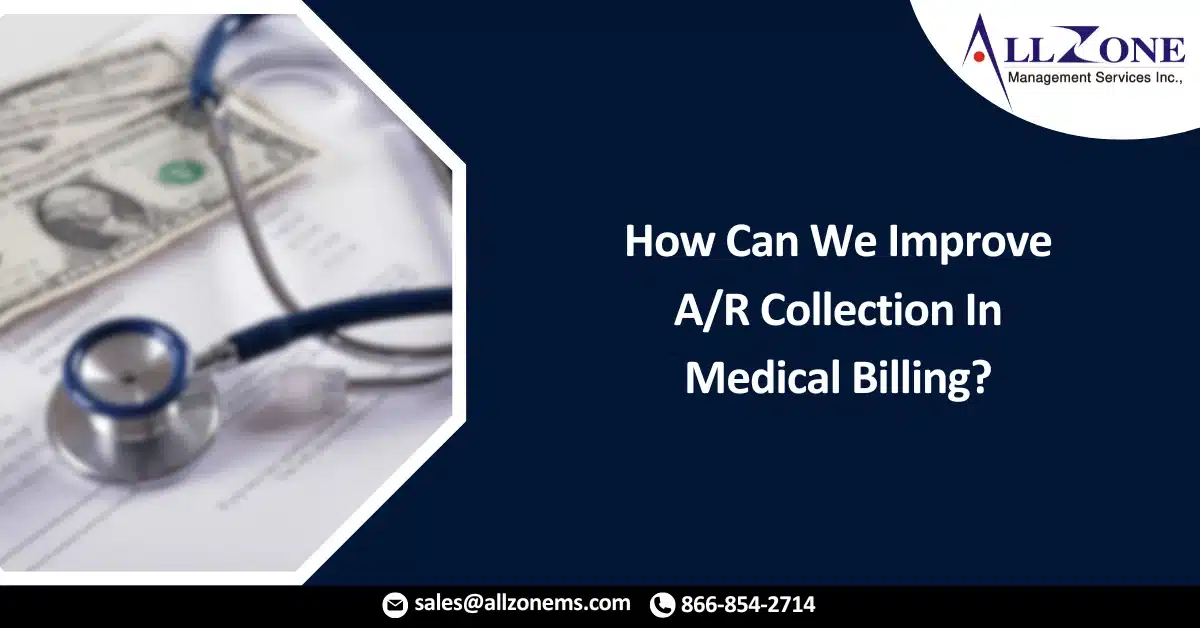Once a patient or their insurance provider is billed for services, the outstanding amount becomes part of the practice’s accounts receivable (A/R). Practices track A/R in various ways, including “Days in A/R,” calculated by dividing total A/R by the practice’s average daily charges. Additionally, accounts are categorized based on their age, such as
- 1-30 days since billing
- 31-60 days since billing
- 61-90 days since billing
- 91-120 days since billing
The longer an account remains unpaid, the lower the likelihood of full recovery. Studies suggest that for accounts beyond 120 days, providers can expect to collect only about 10 cents for every dollar owed.
Therefore, ARs do not automatically translate into revenue, especially if not managed promptly.
1. Clear and Transparent Communication:
One of the key factors in improving A/R collection is establishing clear and transparent communication with patients and insurance companies. This begins with providing patients with a comprehensive understanding of their financial responsibilities upfront. Clearly explain insurance coverage, co-pays, deductibles, and any other out-of-pocket expenses they may incur. By setting clear expectations from the start, patients are more likely to understand and fulfill their financial obligations promptly.
2. Prompt and Error-Free Claim Submission:
Submitting clean claims promptly is essential to minimize delays and maximize reimbursements. Healthcare organizations should invest in robust billing software and ensure staff is adequately trained to code procedures accurately and adhere to payer-specific guidelines. Regular audits of submitted claims can help identify and rectify errors before they lead to denials or delays.
3. Proactive Follow-up and Denials Management:
Proactive follow-up is key to resolving outstanding claims and preventing them from aging. Regularly monitoring claim status and contacting payers for updates can help identify and address issues early on. Additionally, establishing a dedicated team to manage denials can expedite the appeals process and reduce lost revenue.
4. Effective Patient Communication and Education:
Clear and consistent communication with patients is crucial for managing patient balances and promoting timely payments. Patients should receive upfront estimates of their out-of-pocket expenses, along with detailed invoices and payment options. Offer multiple payment channels, including online portals, mobile apps, and automated payment plans, to make it easier for patients to fulfill their obligations.
5. Leveraging Technology and Automation:
Technology plays a pivotal role in streamlining A/R collection and reducing administrative burdens. Investing in revenue cycle management (RCM) software can automate many manual tasks, including claim scrubbing, remittance processing, and patient communication. Additionally, utilizing electronic health records (EHR) systems can improve data integrity and facilitate seamless data exchange between billing and clinical departments.
6. Outsourcing to Specialized A/R Services:
For organizations struggling to manage their A/R internally, outsourcing to specialized A/R services can be a viable option. Experienced A/R professionals can provide expertise in insurance billing, claim follow-up, patient collections, and denials management, freeing up internal staff to focus on patient care.
7. Establishing Clear A/R Collection Policies and Procedures:
Implementing clear and well-defined A/R collection policies and procedures can standardize processes, ensure consistency, and hold staff accountable for performance. These policies should outline timelines for claim submission, follow-up protocols, and patient communication guidelines. Regular training and updates on these policies can ensure that staff remains informed and compliant.Monitoring and Analyzing A/R Performance:
Regularly monitoring and analyzing A/R performance is essential for identifying areas for improvement and tracking progress over time. Key metrics to track include days sales outstanding (DSO), average collection cycle, and percentage of clean claims. By analyzing these metrics, organizations can pinpoint bottlenecks, address inefficiencies, and implement targeted strategies to optimize their A/R collection process.
By implementing these strategies and fostering a culture of continuous improvement, healthcare organizations can streamline their A/R collection process, enhance cash flow, and ensure the financial stability necessary to provide quality care for their patients.

